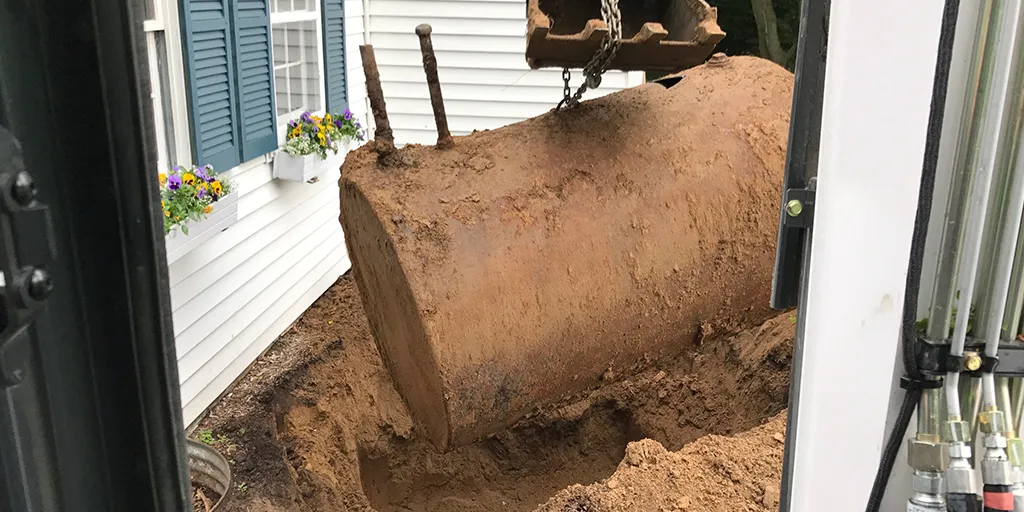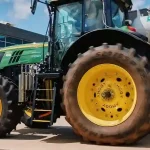Beneath the peaceful exteriors of many homes, a potential hazard lurks in the form of aging oil tanks. As these underground containers approach the end of their lifespan, mastering the art of oil tank removal becomes a crucial task for homeowners. “Subterranean Solutions” is a comprehensive guide that explores the intricacies of safely and effectively removing oil tanks, emphasizing the importance of environmental responsibility and safety throughout the process.
1. Understanding the Subterranean Challenge: The Need for Removal
The subterranean challenge begins with understanding why oil tank removal is necessary. Buried oil tanks, if left unattended, can pose significant environmental and safety risks. Leaks, corrosion, and structural degradation can lead to soil and groundwater contamination, making removal imperative for the well-being of both the property and its surroundings.
2. Navigating the Regulatory Landscape: Compliance is Key
Mastering the art of oil tank removal involves navigating the regulatory landscape governing the process. Local and state regulations dictate specific procedures, safety standards, and permitting requirements for removal. Homeowners must be well-versed in these regulations to ensure compliance, prevent legal consequences, and contribute to environmentally responsible practices.
3. Proactive Site Assessment: Unveiling Hidden Challenges
Before initiating the removal process, a proactive site assessment is essential. Locating the buried tank, assessing its condition, and identifying potential challenges are crucial steps. Soil and groundwater testing may be necessary to unveil hidden environmental hazards. A comprehensive site assessment lays the foundation for a well-informed and successful oil tank removal.
4. Safety First: Protective Measures and Equipment
Mastering the art of oil tank removal places a premium on safety. Homeowners and professionals involved in the removal process must prioritize protective measures. Appropriate safety gear, including gloves, eye protection, and masks, should be worn at all times. Adequate ventilation and emergency response equipment, such as fire extinguishers, are essential to ensure a secure working environment.
5. Selecting the Right Removal Method: Tailoring to the Situation
The art of oil tank removal involves choosing the right method based on the specific situation. Some tanks may be suitable for in-place abandonment, while others may require complete extraction. Factors such as tank condition, location, and environmental impact influence the removal method. Tailoring the approach to the unique circumstances ensures an efficient and environmentally responsible removal process.
6. Precision Excavation: Uncovering the Hidden Container
Excavation is a critical phase in mastering the art of oil tank removal. Precise digging around the tank is necessary to avoid damage and ensure a successful extraction. Specialized equipment and skilled operators are essential for uncovering the hidden container safely. Excavation sets the stage for the subsequent steps in the removal process.
7. Safe Tank Pumping and Cleaning: Minimizing Environmental Impact
Once exposed, the oil tank requires safe pumping and cleaning. Extracting any remaining oil and thoroughly cleaning the tank’s interior minimize the risk of spills and environmental impact during removal. Proper disposal of the extracted oil is crucial to prevent contamination, emphasizing the commitment to minimizing environmental impact throughout the oil tank removal process.
8. Lifting with Precision: Extracting the Subterranean Relic
The art of oil tank removal reaches its pinnacle during the extraction phase. Lifting the tank from its subterranean resting place requires precision and specialized equipment. Careful coordination and skilled operators are essential to avoid damage to the tank and surrounding structures. Successful lifting ensures the safe removal of the subterranean relic.
9. Environmental Remediation: Addressing Contamination Concerns
In cases where soil or groundwater contamination is detected during the removal process, environmental remediation measures become necessary. This involves removing and replacing contaminated soil or implementing advanced treatments for groundwater. Mastering the art of oil tank removal includes an understanding of remediation strategies to address and mitigate potential environmental impact.
10. Documenting the Process: A Record of Responsible Practices
The final step in mastering the art of oil tank removal is documenting the entire process. Maintaining a detailed record of the removal, from site assessment to environmental remediation, serves as evidence of responsible practices. These records can be valuable for future property transactions, providing transparency and assurance of a well-executed removal process.
Conclusion:
Mastering the art of oil tank removal is a multifaceted endeavor that demands careful planning, adherence to regulations, and a commitment to safety and environmental responsibility. By understanding the subterranean challenge, navigating regulatory landscapes, conducting proactive site assessments, and implementing precision techniques throughout the removal process, homeowners can successfully manage the complexities of oil tank removal. The art lies in balancing efficiency with responsibility, ensuring a safe and environmentally conscious resolution to the subterranean presence of aging oil tanks.









